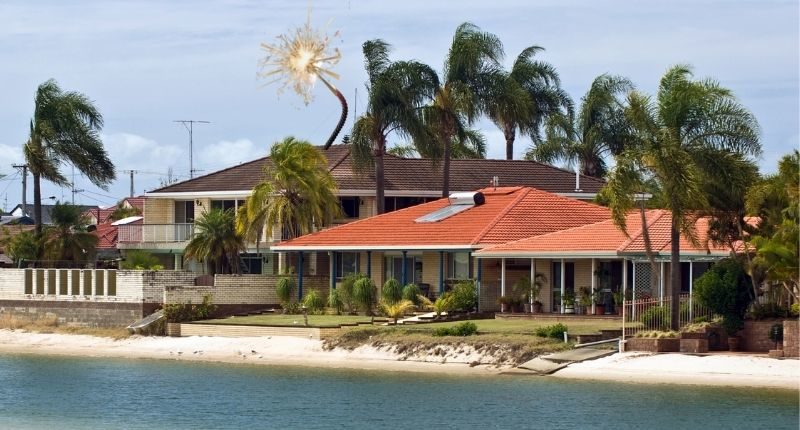
- Top three concerns are climate change, construction costs, and cost of borrowing
- Sales volumes are also expected to be lower than last year
- Vacancy rates unlikely to be higher than market equilibrium
‘Will Australia’s housing market crash?’ is one of the trending topics on Google when you enquire about housing.
While this article won’t tell you what will and won’t happen, a recent Knight Frank report highlighted some of the key factors and risks the Australian housing market faces over the next twelve months.
Three portents of further fury
Knight Frank’s Australian Residential Development Sites Review noted three of the most important risks the company is monitoring includes:
- Escalation of construction costs,
- More extreme weather, and
- Rising mortgage lending rates.
The first two risks “go hand-in-hand”, said the report, with extreme weather putting additional strain on an already tight, tired, and tattered construction industry.
The third concern “hasn’t been on the radar for years”, said the report, but will be “imperative”, going forward.
Risk monitor
The report comprehensively considered 19 different scenarios in each of the capital cities across Australia, with the cost of construction and weather delays practically certain across the board.
Mortgage lending rates were also expected to rise, with largely mixed results otherwise.
Risk monitor for residential development, one year outlook

Low density, low risk
That’s the playbook developers seemed to be using, according to the Knight Frank report.
Federal and state housing grants buoyed the residential real estate sector, at a time when “… developers pivoted towards more low-density developments to lower their risk profile in a time of increasing uncertainty,” the report noted.
On the flip side, build to rent was floated as a potential solution to rental woes currently experienced across the nation. The national vacancy rates are at record lows, a 16 year low, in fact, according to research by Property Investment Professionals of Australia (PIPA).
SQM Data found the latest national vacancy rate to be 1%, almost half that of a year ago, April 2021 was 1.9%.
National
While build to rent is not traditionally designed to address housing affordability, the Victorian state government has acted to the matter.
The Andrews government announced late last year that it will halve land tax levied on built to rent developments from 2022 through to 2040.
Similar moves are expected across the eastern seaboard.
Honey, I shrunk the house!
Yes, houses have become smaller, and apartments larger.
The Knight Frank report found that the average land lot size went from 418 square metres in 2020 to 409 square metres in 2021.
That’s despite prices rising by 6.3% over the same time, according to the UDIA.
Research from CommSec similarly found that standalone house floorspace reduced from 236 square metres in 2020 to 229 square metres last year.
That’s all while apartment floorspace increased 46 square metres from 137 square metres to 183 square metres.
More than just food for thought, that difference is double the size of the average kitchen.







